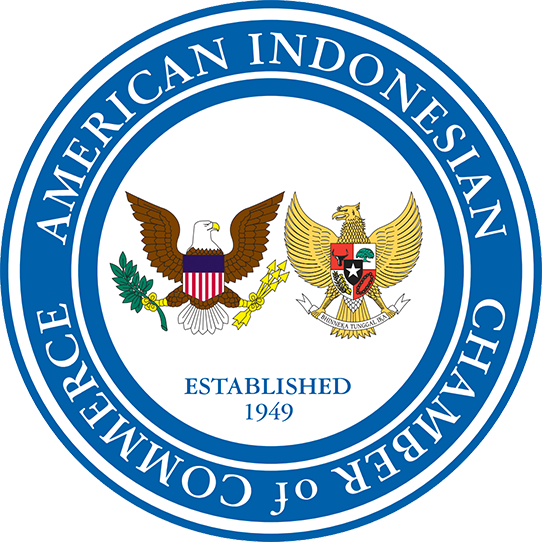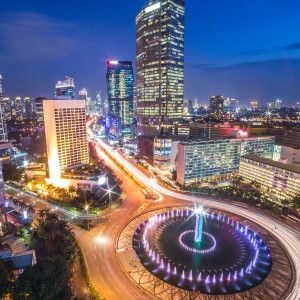I will be visiting Indonesia next week and will likely be asked about President Trump’s trade policy, articulated in his recent executive orders. Will Indonesia, one of 16 countries under review with a large trade deficit, be penalized. Is it really a trade “cheater” ?
The US runs a congenital deficit with Indonesia mostly because we don’t grow key tropical commodities in the lower 48: rubber, coffee, vanilla, cinnamon, tea, teak, essential oils, palm oil and quinine. For as long as I can remember the ratio has been roughly 3 to 1; we import three times what we export. Until such time as American appetites change or there is a catastrophic warming of the northern hemisphere, the deficit will persist.
The Commerce Department should be aware that the structure of our trade deficit is not a major cause for concern. After all we ship plenty of agricultural products to Indonesia: cotton, wheat, soybeans. The cotton helps balance our import of garments. We’ve had some problems exporting fruits and beef; these are being addressed at the WTO and directly. Indonesia should relax restrictions on refurbished equipment and reduce tariffs on high tech equipment still classified as luxury items such as CAT scanners. Stronger enforcement of intellectual property rights would promote the export of software, higher tech services, agrichemicals, and pharmaceuticals products. I’d also like to see more gumption from US vocational educational schools to establish a presence in Indonesia where there is a growing demand for trained workers in all kinds of fields not requiring a college degree. Education is potentially one of the best US exports.
The Trump Administration will find that very few US manufacturers have moved jobs and operations to Indonesia. A large proportion of garment manufacturers went off shore decades ago. Indonesia was late to this industry. It was US textile quotas in the 1980’s that drove manufacturers from Hong Kong and South Korea to open factories in Indonesia. When that happened American cotton exports to the country jumped.
Perhaps Barbie is guilty. The world’s largest Barbie doll factory is in Indonesia. Although Indonesian girls like her, Barbie travels to markets all over the world not just back to the US.
Some US manufacturers have expanded production there to serve local markets when it makes sense. P & G makes diapers in country now that the middle class has grown large enough. Young couples can’t afford nannies but they can afford Pampers. They can sell more than if they just exported from the US. Eventually the factory will provide products for the rest of Asia. I personally believe more US consumer products companies will do this if Indonesia does not go too far to protect local companies, infrastructure improves and the rule of law strengthens.
Indonesia’s attempt to legislate local production often backfires as it did with rattan. An export ban on raw rattan did not lead to a significant increase in foreign investment. Rattan furniture exports under the ban never reached the value of raw material plus furniture. The ban catalyzed greater use of synthetics and purchases from the Philippines which kept its export window open. Based on the same flawed logic, an export ban on raw mineral ores is having similar problems.
Without TPP Indonesia is justifiably nervous. Is it a coincidence that a way was found for Freeport to export copper concentrates –in the midst of a titanic dispute –right before the arrival of Vice President Pence ? Beyond this are a series of proposed localization regulations that limit exports of US pharmaceuticals, limit the footprint of on-line service providers, force local content on cell phone makers, and potentially curb the activities of US banking and insurance companies. Cleaning away these hurdles would certainly help but not eliminate the US- Indonesia trade deficit.
The best way to correct trade deficits is not to frame them as zero sum games. Policy makers should understand that a better balance between savings and consumption –perhaps through taxation and incentives– can mitigate them. Labor dislocations can be met with retraining to some degree. More important is improving elementary and secondary education –so that a high school graduate can assume the kinds of computer assisted manufacturing jobs that are the wave of the future.
AICC members are largely importers and value the relationships they have with their Indonesian suppliers. Our member banks, including Indonesian state banks often provide the documentation and credit to insure efficient payments. When I am in Indonesia next week my job will be to reassure all parties that there is no need for panic. Indonesia is not guilty of taking away US jobs. Trade only adds to them.
(The writer’s opinions do not necessarily reflect those of the American Indonesian Chamber of Commerce or its members)





